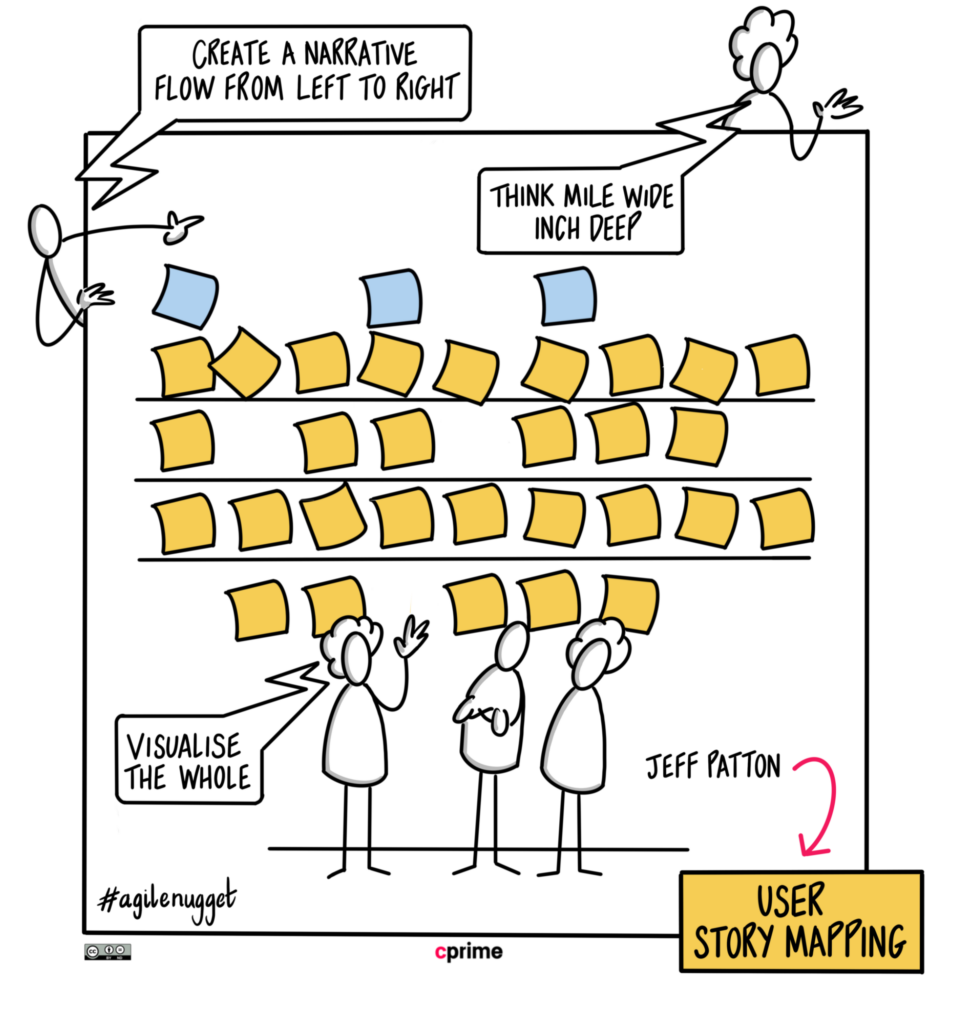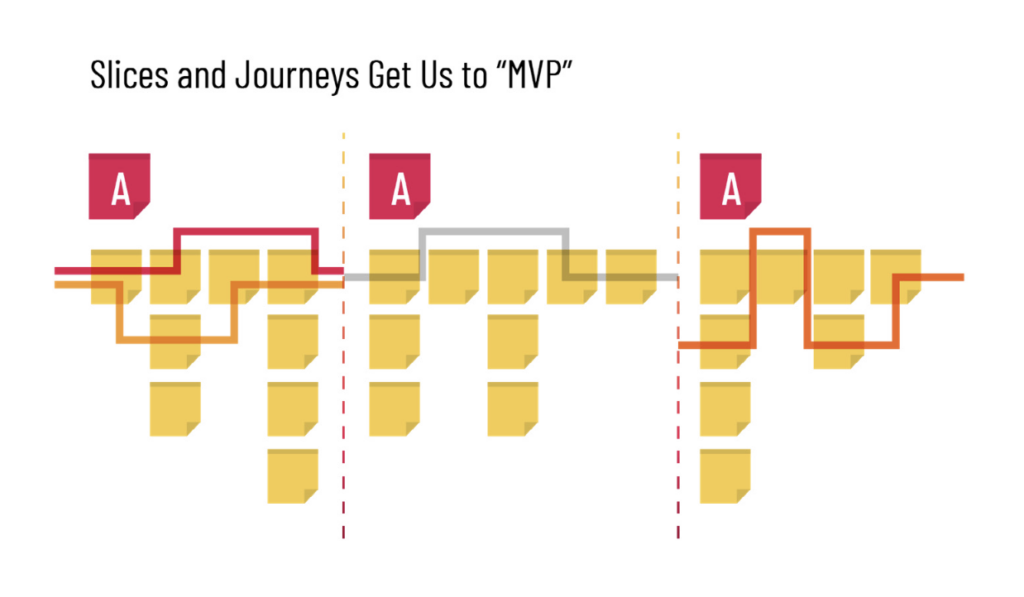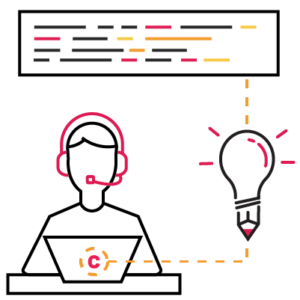“We aren’t estimating stories accurately.”
“Our velocity is inconsistent because we can’t estimate well.”
If your team is making comments like this, you may be tempted to focus on estimation skills.
But often, the real issue is upstream: your backlog isn’t framed and refined properly to enable estimation.
In this post, we’ll walk through how to build a value-focused backlog for technical products using discovery practices like story mapping. With well-defined stories tied to customer needs, your team can estimate and deliver value reliably.
Let’s get started.
Much of this article is derived from our comprehensive guide, The Non-technical Product Manager’s Guide to Technical Product Management. Read it here.
Backlogs blocked by poor discovery
Imagine your leadership dropped a major initiative in your lap:
Build an automated drone analytics platform for commercial site inspections.
Now you need to produce a prioritized backlog for your developers to estimate and execute on. Where do you start?
Most PMs are taught to decompose requirements in a linear way:

But this top-down approach leads to abstract stories disconnected from specific value.
Without customer context, engineers struggle to estimate size accurately.
That’s why mature PMs know discovery comes before backlog definition. Discovery practices like:
- Customer interviews
- Story mapping
- Impact mapping
These help you frame the backlog around concrete value vs. nebulous requirements.
Let’s see how story mapping can build a value-focused backlog using our drone analytics example.
Step 1: Map the end-to-end process

Start by visually mapping out the end-to-end workflow for users. This establishes the big picture before diving into granular stories.
For our drone analytics platform, key steps include:
- Set up and configure drones
- Capture aerial footage during site inspection
- Process and analyze footage via AI
- Generate inspection reports for clients
Focus on the critical use cases and steps users move through to accomplish their goal. The backlog will bring this workflow to life incrementally.
Step 2: Capture capabilities as rows
Next, break down that workflow into distinct capabilities that support each step. Capture epics or features as rows on your map.
Example capabilities for drone analytics:
- Automated drone flight plans
- Computer vision analysis of aerial data
- Annotated inspection report creation
- Role-based access controls
- API for third-party data integration
Resist detailing requirements. Just capture capabilities needed to enable the end-to-end workflow.
Step 3: Define value with columns
Now move down the first capability and ask “How does this deliver incremental value?” Define 3-5 columns showing increasing value from left to right.
For automated flight plans, columns could be:
- Manually define flight grids
- Generate flight grids from 2D site maps
- Optimize dynamic flight path around 3D site model
Doing this exercise for every capability clarifies how functionality builds on itself to drive user value.
Step 4: Identify MVP with your team
With the full map in place, gather input from stakeholders on what capabilities and value increments are absolutely essential for an MVP.
In our example, the core workflows of capturing footage and generating reports are likely critical. Advanced functionality like APIs and access controls may wait.
This input helps you identify the thin vertical slice through the map that becomes your MVP backbone.

Step 5: Break down columns into granular stories
Your prioritized MVP path through the map provides framing to detail out stories within each capability.
Take the MVP column for automated flight plans: “Generate flight grids from 2D site maps”.
To enable estimation, we need to define granular stories like:
- Upload 2D site map in supported formats
- Validate site map dimensions and parameters
- Automatically generate waypoints for efficient flight grid
- Display flight grid overlay on map for user approval
- Save flight plan for importing to drone modules
Small, testable stories like these allow developers to size work accurately.
With the end-to-end map plus detailed stories in place, you now have an actionable backlog framed around delivering value, not just capabilities.
Real-world examples of discovery for technical products
While story mapping is extremely effective, there are other discovery techniques PMs can use to build technical backlogs:
Impact mapping
Impact mapping is ideal when you know the business outcome but not how to achieve it. Start by defining the goal, then drill down into capabilities and stories.
For a chatbot to improve customer satisfaction, an impact map might surface conversation workflows and natural language processing as key enablers.
Technical spikes
Sometimes you need to research solutions before defining stories. Create timeboxed “spikes” for things like:
- Evaluating algorithms for image processing
- Proving a new cloud service will meet scalability needs
Let findings inform your backlog.
No matter what, start with discovery
The next time you’re struggling to build a vague backlog or size nebulous stories, remember that estimation begins with discovery. Well-defined stories tied to customer value enable accurate estimation.
So before your team tries to estimate better, invest time upfront to:
- Map the end-to-end workflow
- Identify key capabilities
- Map columns showing increasing value
- Break down MVP features into granular stories
This discovery work pays dividends by resulting in a backlog built to drive value delivery.
Dive deeper by downloading our comprehensive guide, The Non-technical Product Manager’s Guide to Technical Product Management.


























